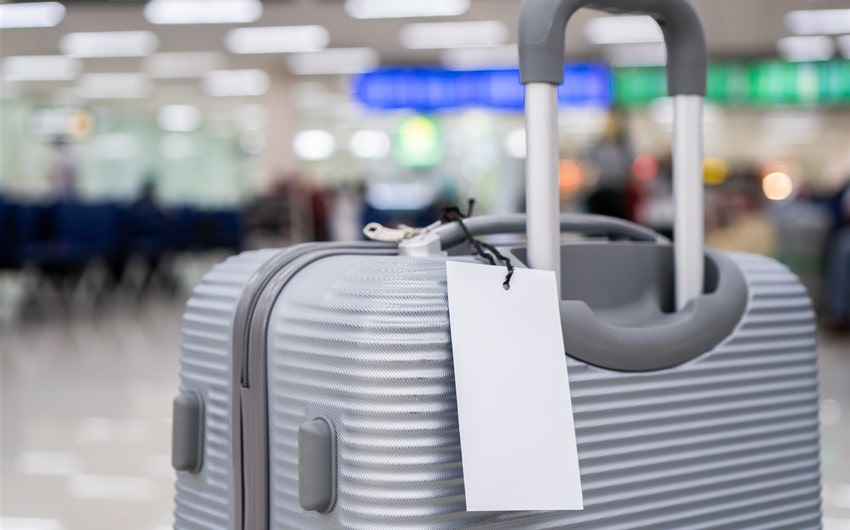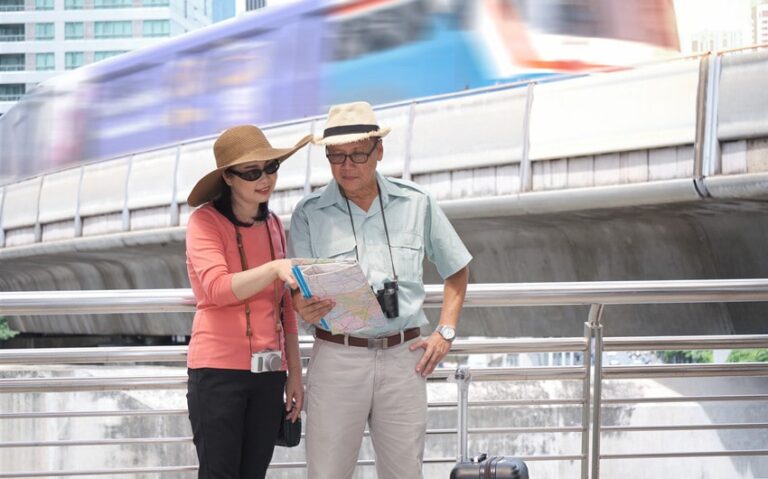How to Tag Luggage for Air Travel and Avoid Losing Your Bags
When your bags disappear at the airport, it’s more than inconvenient—it’s stressful, expensive, and avoidable. If you’re not tagging your luggage correctly, you’re increasing the odds of delays, confusion, or even total loss. Here’s how to tag luggage for air travel the right way—so your belongings get where they’re supposed to, with you.
1. Use a Durable Luggage Tag That Won’t Tear Off Mid-Flight
Cheap paper or flimsy plastic tags might survive a road trip, but airport conveyor belts and baggage handlers aren’t gentle. Invest in a tag that’s built to last.
- Best materials: Leather, silicone, or heavy-duty plastic with steel loops or buckles.
- Avoid paper sleeves: Even with tape, they can tear, smudge, or get wet.
- Choose bright colors: Not only are they easier to spot, but they’re less likely to be overlooked or misread.
Make sure your tag stays attached under pressure—because it probably will be thrown, yanked, or stacked under dozens of other bags.
2. Include the Right Information—But Not Too Much
Your luggage tag should provide enough information to reunite you with your bag quickly—but not so much that it compromises your privacy or safety.
- Must-have details: Full name, cell phone number (with country code), and email address.
- Optional: Your destination address or hotel name (especially for international travel).
- Don’t include: Your home address unless required for insurance or international customs.
If someone finds your bag, they should be able to reach you fast—but not learn everything about your personal life from one tag.
3. Put an Additional Tag Inside Your Luggage
If the outside tag goes missing, how will anyone know the bag is yours? That’s where an internal tag or card comes in.
- Use a business card or index card: Place it in a mesh compartment or on top of packed clothes.
- Include the same info: Name, phone, email, flight number, and destination city or hotel.
- Make it waterproof: Slip the card into a ziplock bag or use laminated paper to keep it readable.
This backup increases your chances of reclaiming a lost bag, even if the outside tag is destroyed.
4. Always Use the Airline-Issued Tag at Check-In
The luggage tag you attach at home won’t get your bag on the plane. That’s what the barcode tag issued at check-in is for.
- Confirm it’s your name and destination: Mistakes happen. Make sure the info on the tag matches your flight.
- Keep your baggage receipt: That small sticker or receipt number is how you can track a lost bag.
- Tag placement matters: Attach it securely to the handle or side loop where it won’t get tangled or ripped.
If you check in at a kiosk, double-check that the printed tag matches your flight info before attaching it to your suitcase.
5. Use a Smart Tag or Digital Tracker for Extra Protection
Luggage tags help airline staff—but smart trackers like Apple AirTags or Tile help you. They give you real-time location info if your bag gets delayed or rerouted.
- Place the tracker inside your luggage: Hidden under a pocket or lining is best for protection and discretion.
- Test it before your trip: Make sure your phone or app can detect it in different environments.
- Use it with—not instead of—physical tags: Airline staff can’t scan your AirTag. It’s only for your personal tracking.
Smart tags are especially helpful during layovers, international connections, or if you’ve had luggage lost in the past.
6. Avoid Common Mistakes That Get Bags Misrouted
Even experienced travelers make small tagging mistakes that can lead to big headaches. Avoid these:
- Leaving outdated tags on your bag: Remove old barcodes or airline tags from previous trips to avoid confusion.
- Writing in pencil or light ink: Fading or smudged writing is unreadable. Use permanent marker or print your info.
- Relying only on luggage stickers: Airline luggage tags should always be barcoded and machine-readable—not just color-coded.
Before you leave the check-in counter, take a quick photo of your luggage and your tag. If it’s lost, you’ll have a visual reference.
7. Label All Bags—Even Carry-Ons and Personal Items
You might think your carry-on is safe—but gate-checks, overpacked bins, or accidental grabs can still separate you from your bag.
- Use the same durable tag: Even on backpacks, camera bags, or laptop cases.
- Add your phone number: If someone grabs the wrong bag, a quick call can fix it before takeoff.
- Consider color-coding: If traveling with family, matching tags help keep track of everyone’s items.
Lost carry-ons happen more often than you’d think—especially during rushed connections or crowded flights.
8. Secure Loose Straps and Remove Dangling Items
Tags won’t help if your luggage gets caught in a conveyor belt. Secure all straps and loose items before checking your bag.
- Zip up every pocket: Don’t leave small items in exterior pouches. They can snag and spill.
- Remove luggage belts and ID holders: Anything dangling is at risk of tearing off in transit.
- Use zip ties for soft bags: If your bag has no locks, temporary zip ties help keep it closed during rough handling.
Proper tagging only works when your luggage arrives intact. Protect the bag as much as the label.
9. Use Destination Tags If You’re Traveling with a Tour Group
Tour groups, cruises, and student trips often move bags in bulk. To avoid mix-ups, use temporary destination tags specific to your itinerary.
- Include hotel name or tour ID: Write this on a temporary label or stick-on tag for fast sorting.
- Mark your room number (if assigned): Especially if your bags will be delivered directly to accommodations.
- Use colors or symbols: If your group assigns color-coded tags, make sure yours is correct.
These extra labels help bellhops, drivers, and hotel staff know where your bag belongs—especially if you’re one of 50 in matching suitcases.
10. Double Check Before Departure—Don’t Just Hope for the Best
Right before you hand your bag over at check-in or curbside, give it one last check:
- Is your contact info up to date? If you’ve changed your number or email, make a new tag.
- Is the tag securely attached? Pull on the strap. If it feels loose, reinforce it or move it to a better spot.
- Is your airline tag correct? Read the barcode label and make sure it lists your destination airport code.
Those 30 seconds could save you hours of stress at baggage claim—especially after a long flight or a tight connection.
Tag It Right, and Travel with Less Worry
Luggage tagging seems simple—until it’s the one thing standing between you and a missing bag. Doing it the right way doesn’t take long, but it makes a huge difference. Use smart tags, double up with internal cards, and make sure your information is clear and secure. When your bag is tagged well, you give it the best chance of arriving right where you need it to be—right next to you.







